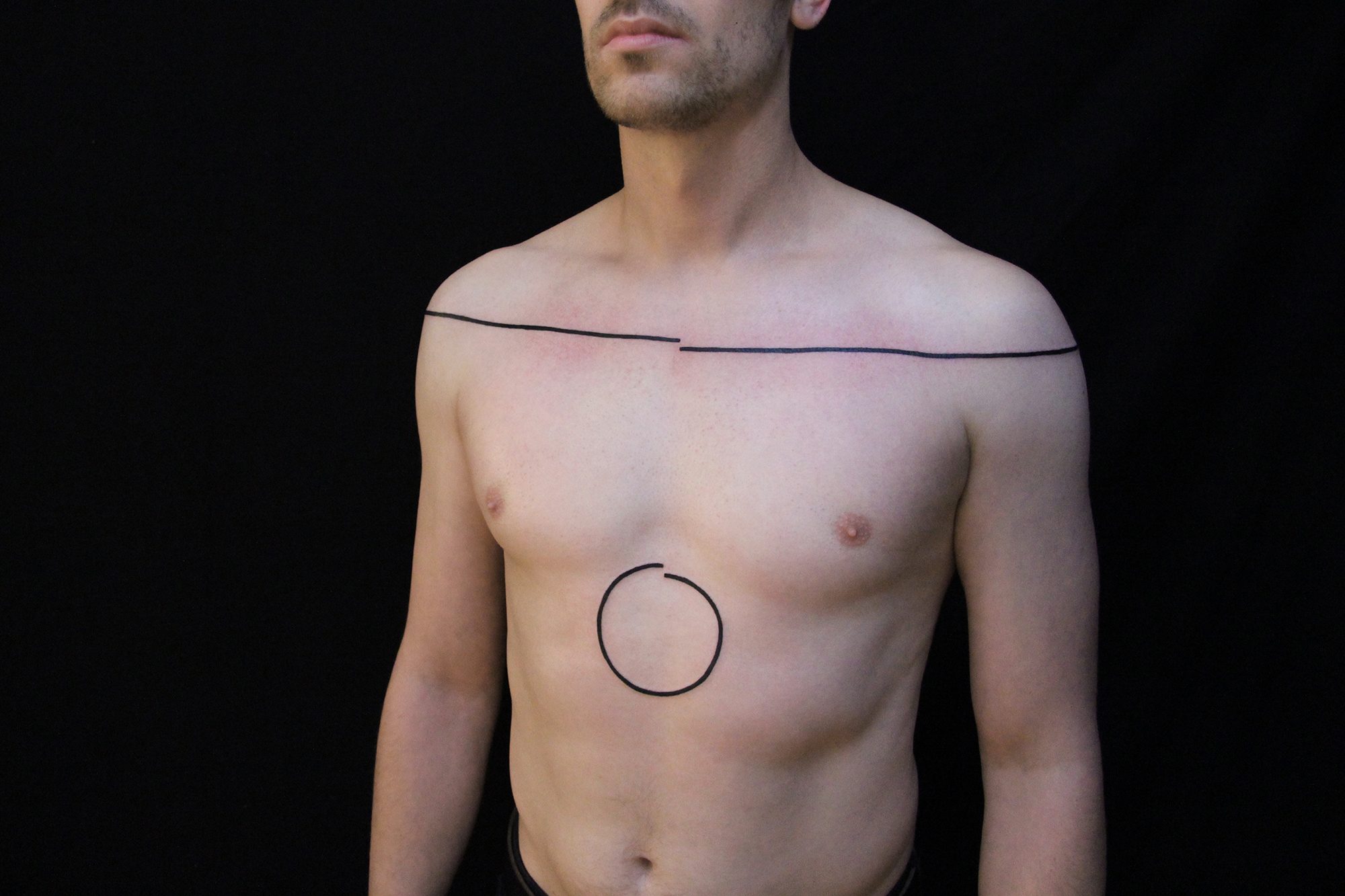
It was a sunny Monday afternoon when we met up with Chaim Machlev (DotsToLines). He got a quick bite and then met us on his studio doorstep. The neighborhood was beautiful—full of trees and soothing bird chirps.
His studio was setup in a basement with gold-patterned wallpaper and framed music posters (much of which he illustrated) on the walls, and soft music played in the background. We sat on his couch and he asked how long the interview would be, it was intended for 15 minutes, yet we had such a pleasant time talking that it lasted an hour.
Machlev is a native of Israel and left his home in 2012 to become a tattooer in Berlin—he struggled to get a door open to get his chance in the industry. He got to the point that he had no money and was donating blood, living off of 14 Euros a week. He believed in his dream and worked very hard to make it happen … today, he is considered one of the most successful, praised tattooers in the world; a perfectionist who is known for his elegant and minimalist line and dot work.
Above: The latest tattoo design by Chaim Machlev.
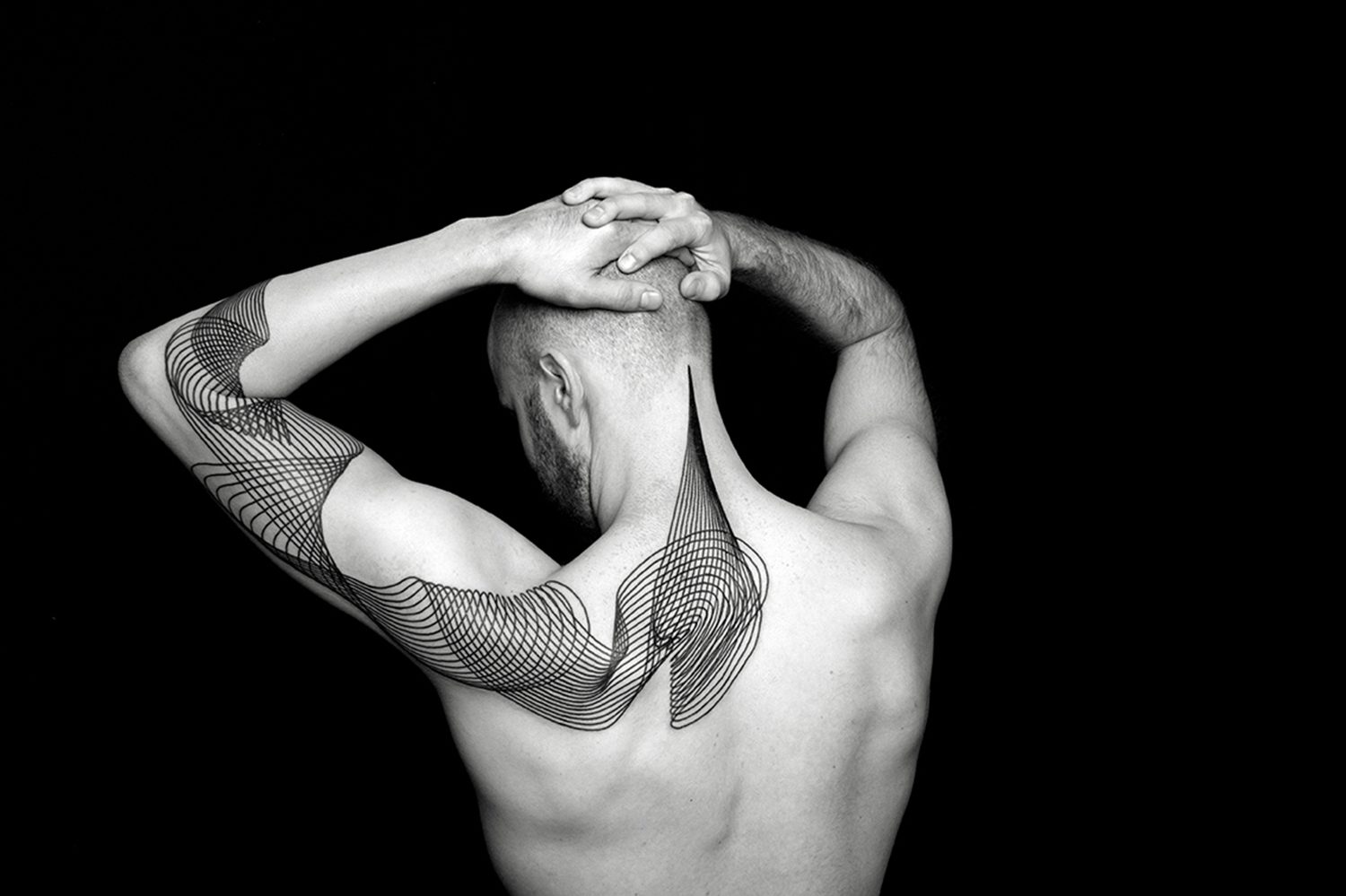
Machlev became known for linework that look like tattoos in motion. Photo by Erik Weiss.
When you were going door-to-door trying to get a studio to accept you as a new tattooer, did you ever think then that you’d become this successful? [I.e. career success.]
For me success at the beginning was just to learn and to be able to talk to people. I mean I did sacrifice a lot to come here for it [a tattooing career]. And I had to leave my work—I had a pretty comfortable life there and so on. I was a project manager in a high-tech company and I had all the social benefits that comes with it.
And when I decided to move I had to sell everything, and just come here, with a little bag on my back. I didn’t know anyone. Trying to find a studio was hard because of the fact that I didn’t have any portfolio and any artistic background. So at some point I was like holding on to hope, and for me success at that moment would have been to just be able to tattoo people. Because I got to the point that I didn’t have any money, I had to donate blood to get money for food. I lived with 14 euros a week. I donated plasma. (Yeah it is weird. We’re not speaking about it! That’s not that so interesting or inspiring.)
Now I would say that success for me is to be able to create more stuff which is connected to art. Sometimes I feel that I touch it—with tattoos or with like merchandise designs, silkscreen posters designed for bands and for music.
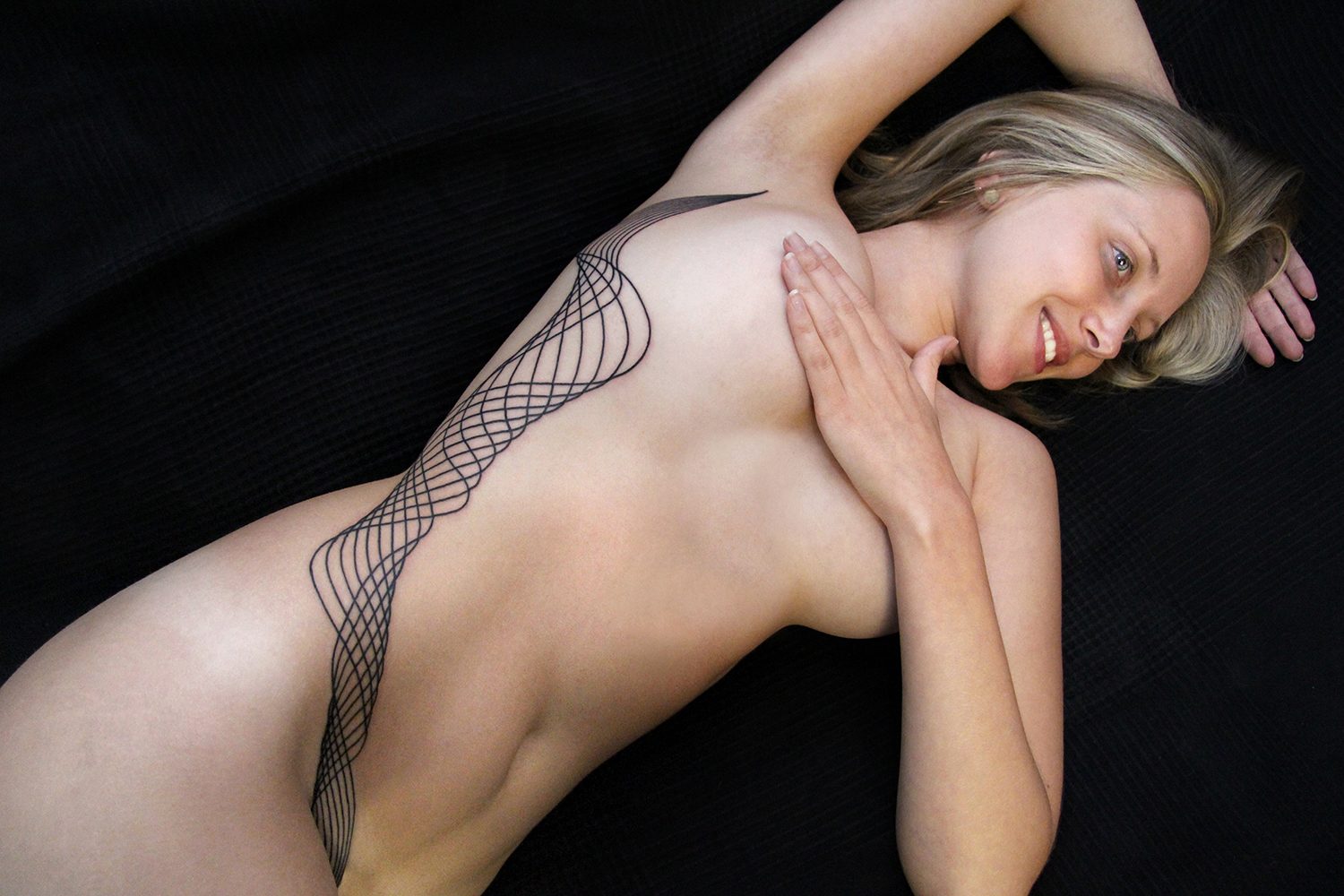
The artist is meticulous about tattoo placement on each client’s body.
Touching in what sense?
It is like art. Touching art. Touching the border of art. I mean I don’t know maybe it’s like what I was saying before [the start of interview] about being a perfectionist. Like it is still weird that people call me an “artist.” I think that being an artist is something that comes with so much devotion, so many years of practicing and being able to actually leave what you’re doing. I feel that I touch it sometimes. Like I manage to do it sometimes. Maybe 10 percent of what I really would like to. So for me now success is like what that would be. I don’t really see success as like having materialistic [things]. Of course it’s benefits from work, it’s like positive strengths at the end of the day, but it’s not what I would measure with success. But having people traveling here and devoting themselves so much to waiting two or three years to get tattooed and they don’t have any tattoos on their body, and they really do wait, and come here, and they have so much trust and they feel like they are completely naked from the ego. They allow me to do whatever I think will work on their body. That’s success in my eyes. And I hope that it will just continue.
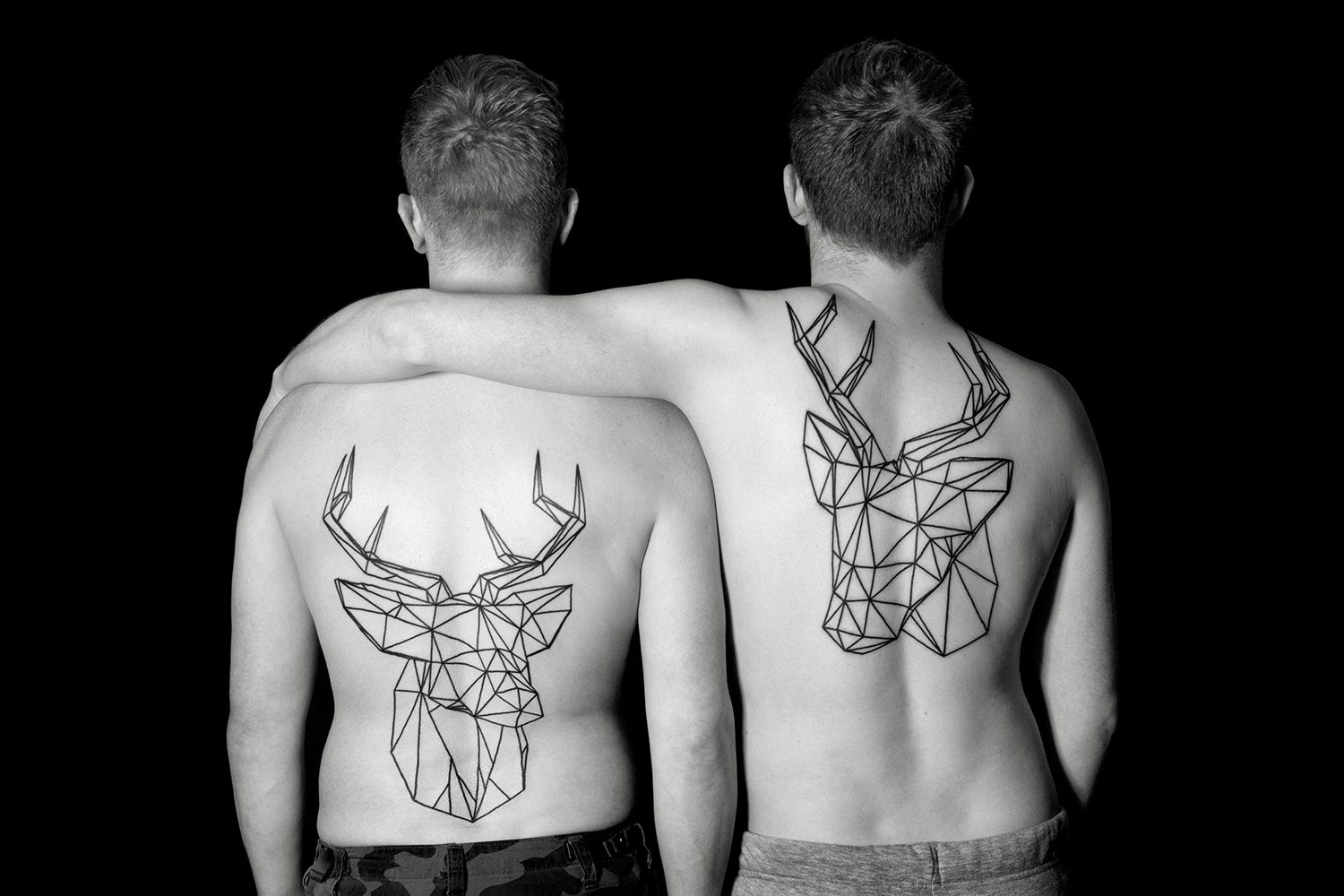
Berlin-based artist Chaim Machlev explores a different tattoo style (above).
Do you try to involve your clients in the creative process?
I try to involve them more in the process because people sometimes tend to come with no idea of what they want, or they saw something they really want to have, or they have too much of an idea of what they want. [All] are depending on stuff that they saw before. And normally they have a different body, and it moves in a different way. They stand in a different way. They have a different energy, different aura. And it’s impossible to do the same thing, or to do something that’s even close to that. I think that at the end of the day I tried to give them [something substantial] (in the short time that I have with them), because normally I design in the same day and tattoo in the same day . . . unless I feel that they’re not ready. Sometimes I tell people “Okay sorry let’s make another point for another half a year; it is too much for me to make decisions for you.”
Do they get upset with you?
Yeah, I rather them being angry now than sad later. Because if I have a lady that comes and she doesn’t care what she wants on her body. And she wants to have the most bold thing of a front tattoo, full of lines, and she’s 25. I can’t take this responsibility. You know what I mean, like if I would feel that it’s not coming from the right decision, or from the right love for tattooing; just for the sake of like being the first one who is doing this . . . I would not take it, because most of those people don’t understand that those tattoos are changing by time. They’re not staying like it’s a printer. Even theoretically it can’t be perfect because it’s handmade, and you don’t have the same amount of ink at the beginning and at the end of the line.
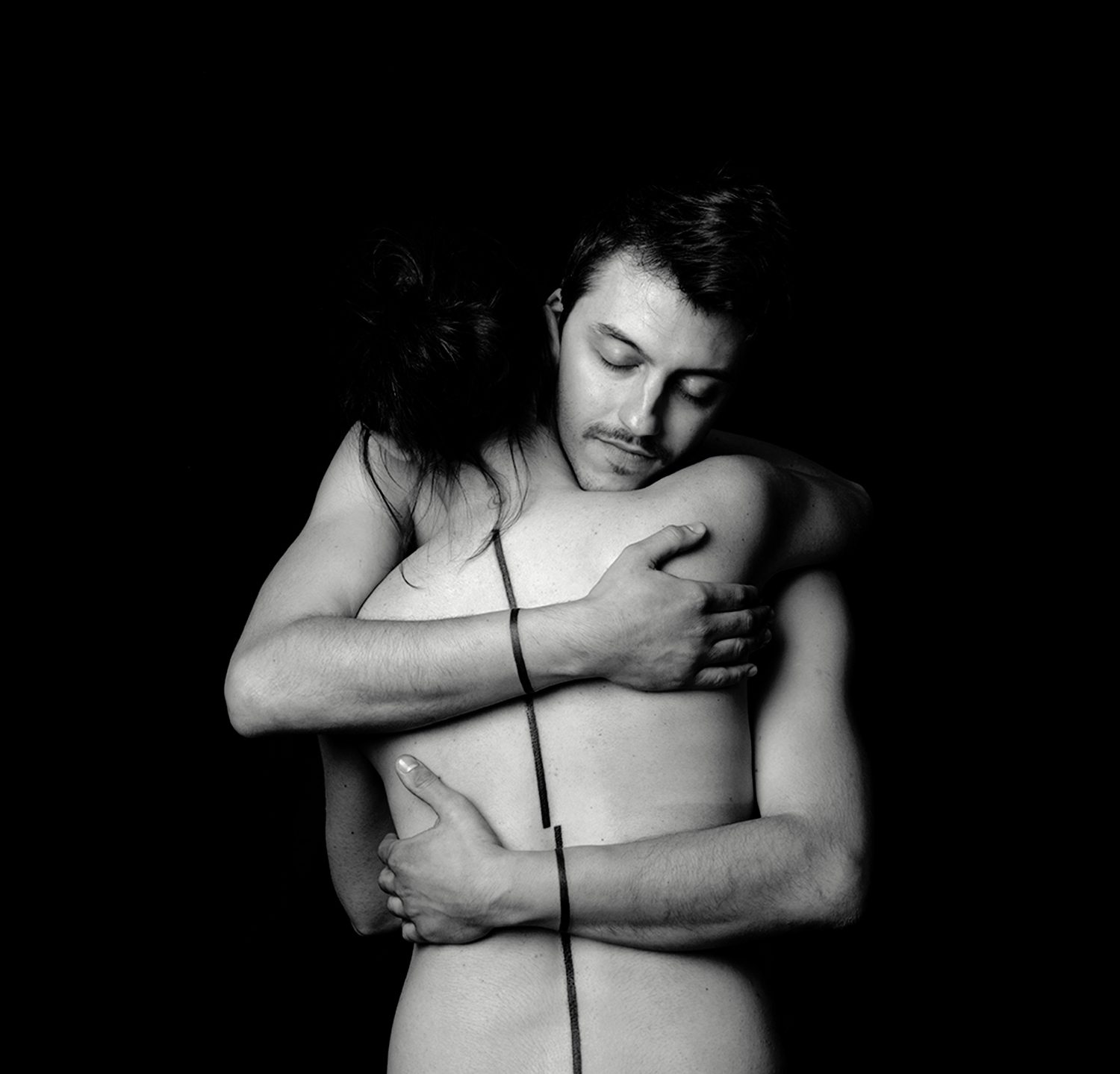
Love and unity are gracefully depicted in this interlocking tattoo.
Body types are different.
Yeah, body types. Blood types. Nutrition. The way you take care of your body. It can never be perfect. I mean that’s the beautiful thing in tattooing. Unfortunately in my job and what I do it is very noticeable—if there is like a line that explodes or something that looks a bit crooked . . . but of course it is part of that. And this is the first thing I tell them when they come here. Like I have a body suit on me from the best tattooer in the world, Filip Leu. And some artists know how to manipulate those imperfections [to make them successful]. To create beautiful things from these imperfections. But if someone is sitting and looking at it, you know it’s not like an artwork that you do on a canvas. It’s a live person.
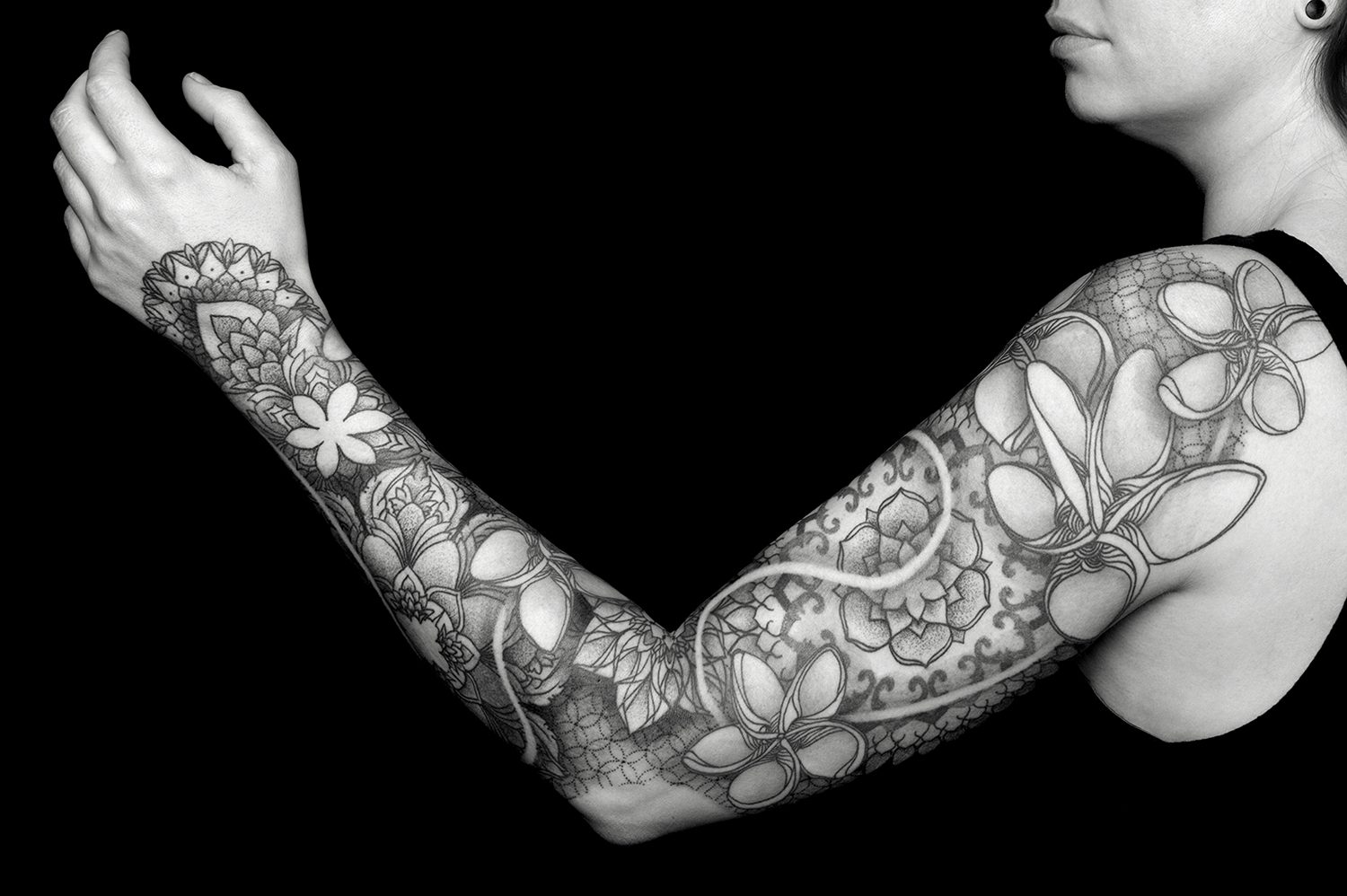
In this tattoo it is clear how versatile Machlev is with his line and dot work techniques.
You did a collaborative tattoo with Filip Leu. What was it like working with him?
Oh he’s amazing. He’s my biggest inspiration. (Besides the body suit he made me.) His approach is the right approach to tattooing clients in the whole industry. In my eyes he is the ultimate tattooer. A lot of devotion, a lot of respect to the craft. It is a craft that you need a lot of respect to. Or else it slaps you in the face. Seriously, you can’t be a tattooer artist, an artist at all if you don’t respect the craft. Tattooing especially because of the fact that it is very permanent, and it is ancient. You do a line (it is there) and cannot erase it. Right. You need to have a lot of respect; you cannot be arrogant. You can’t have your ego in front of you. You can do a beautiful work technically, but if you have this arrogance and ego in front of you then your client is not feeling you. So the process is not complete. They got a beautiful tattoo but have a fucked up experience. Then what do they have on the body, a beautiful work, but it reminds them of something they want to forget.
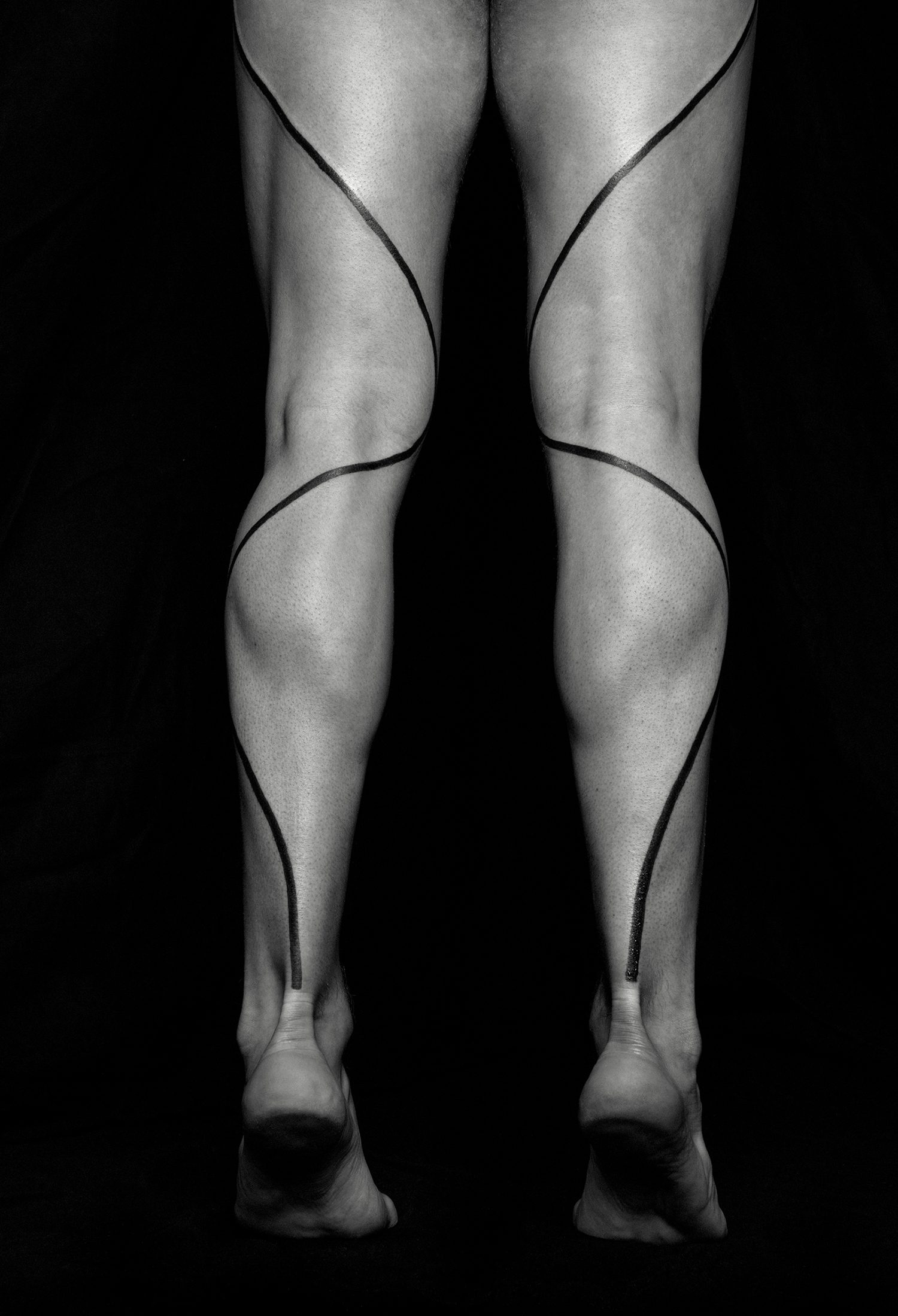
Minimalism is a common trait in the artist’s portfolio.
You’ve ended up doing dot and line work. Mentioned that you don’t draw. Is this true?
Yeah because I really wanted to tattoo. I love tattooing. I loved drawing as well. But to be honest I suck and I’m really bad [at drawing]. I tried to draw. I love like that feeling when you sit for hours until you find the right concept or you feel like that’s when you make something balanced on a paper. But I already put myself to the realization that drawing for me would come after I resigned from tattooing.

A silkscreen poster for Roger Waters’ concerts in Berlin; designed by Chaim Machlev.
You did illustrate the posters on your studio walls.
Yeah I do a silkscreen prints. Mostly, partly are hand drawn. A few are digital art.
I would like to experiment different types of art. However, I really enjoy tattooing. I used to play musical instruments—guitar and bass guitar for at least 4 to 5 hours a day. I don’t do it at all since I started tattooing … it’s emptying my resources of creation and ideas. Sometimes at the end of the day, I can’t even communicate with my partner, like I’m getting to the point that I’m sitting in a room and I can’t conceive anymore. I can’t take inside anything [else].
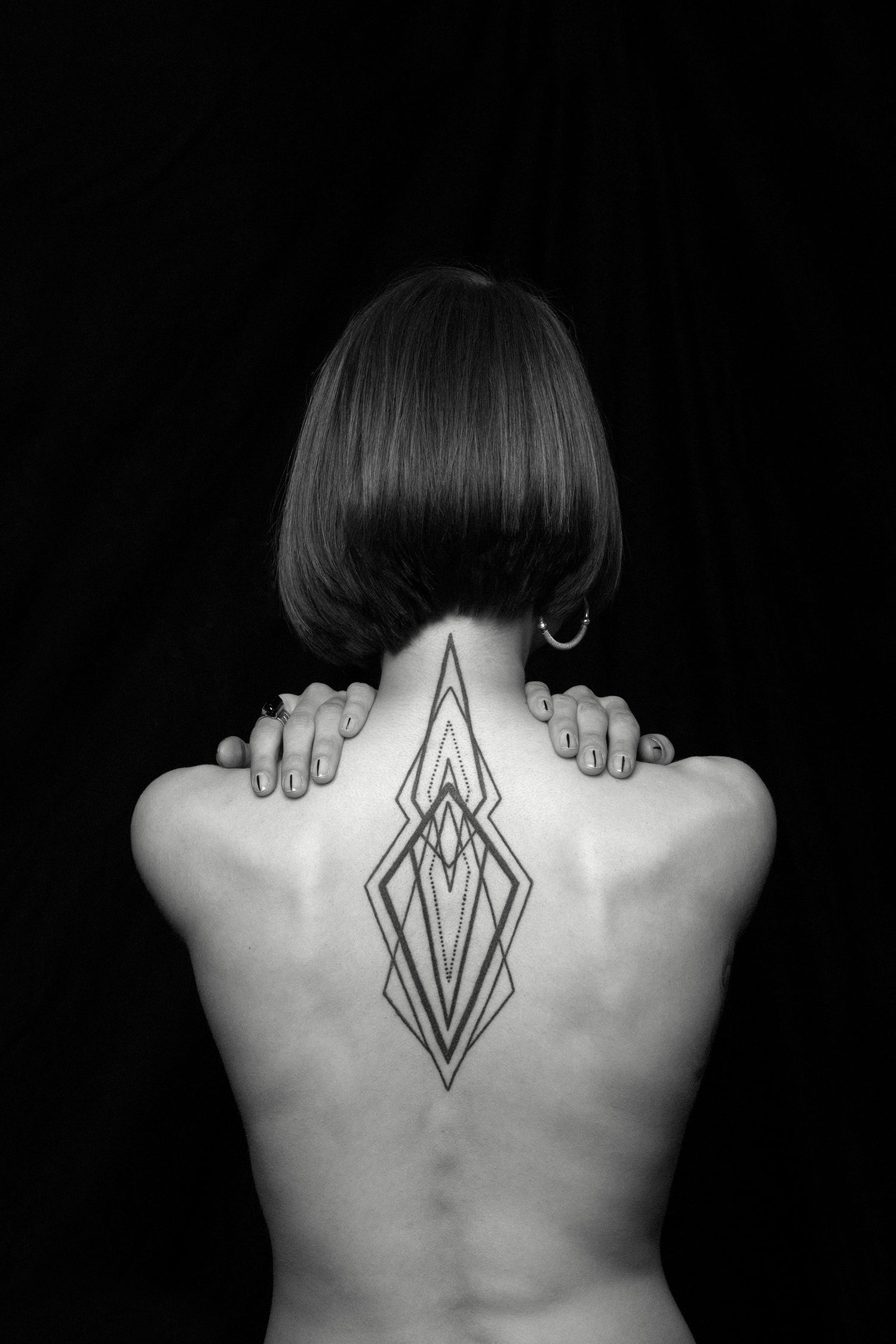
Machlev uses solely black ink for all of his work.
So you are totally focused on tattooing only, and have no energy for anything else.
Exactly, no energy. And that’s the reason that I also chose not to do [tattooing] everyday. That’s why the waiting list is also very long. I’m not up to it every day and I never do more than one person a day. To be honest I don’t think that it’s … I’ll be very careful what I say now because I know that there are a lot of other artists that will criticize what I say. So you also have to edit it in the right way.
OK. (Laugh.)
For me it’s hard to create on a daily basis and to create stuff which is very close to art, which are really creations. You can repeat [stuff], but then it’s like a mechanism you know—it’s very mechanical. Yeah there are like other artists who do five or six tattoos a day.
Like there are authors who publish books every month and then there’s authors who publish one every six years. To create masterpieces is difficult to do in quantity.
Exactly.
But commercially to live off of the work is not easy if there isn’t a sufficient amount, so that’s why you may be concerned with the criticism.
No, I’m concerned with the criticism because I don’t want to criticize other people’s ways of working. Other people’s process of creation. Because mine is different. Mine is also very young. I’ve been tattooing for less than five years. I’m very young when it comes to that. So I’m not in the position to judge anyone else. Even if I tattoo for 20 years I can’t do that. There are a lot of people who see my way as the wrong way because I never did an apprenticeship. I came out of nowhere and started to tattoo people.
In art there isn’t a right way.
I don’t want to say it is the “tattoo scene,” but there is a strong core of tattooers.
You mean purists.
I select [remove] myself from most of those ideas because it just poisons me. I don’t know many artists here. I’m doing my own stuff here. I don’t like competition. I don’t like to be part of major part of society. Like the fact that you see “DotsToLines” everywhere on the Internet; half a million followers here, half a million followers there . . . that’s not me. I chose to make “DotsToLines” because I didn’t want to come as “Chaim Machlev,” and put myself in the center, but instead show my work. The only reason I chose to take my work to social media and to show people was because tattooing opened my eyes to art. It built so much for me—my self-esteem, my self as a human. I realize when I do it to someone else [adding] my art it is someone that has never had tattoos before. If I see that what I’m doing is opening people to art. Tattooing can be art. Of course I wanted to show it to everybody because it is attracting more people. And we need these people. It is opening people to tattoos.
Photos 2,4,5,6,7 and 9 © Erik Weiss All other images © Chaim Machlev
